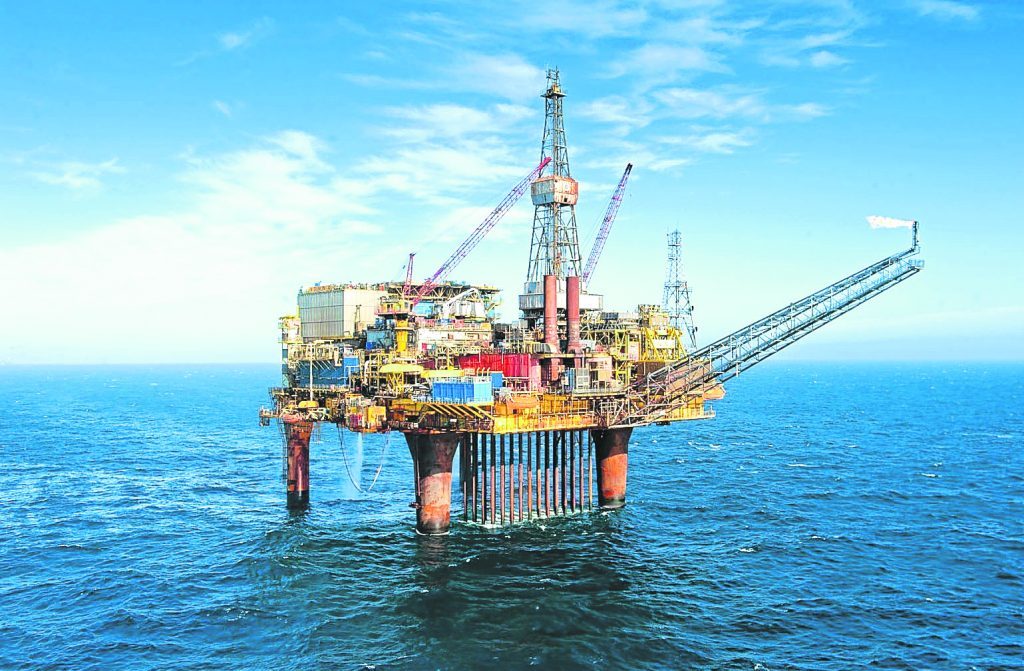
Fairfield Energy said yesterday that costs were “not the main driver” behind its request to leave the huge concrete legs of the Dunlin Alpha platform in the North Sea.
Managing director John Wiseman said more than 100 studies had been carried out to help the firm arrive at its decision.
Mr Wiseman said attempting to remove the structures would not make sense from an “environmental, technical or safety” standpoint.
He also said decommission activity on the Greater Dunlin Area (GDA) was providing a lot of “employment opportunities” for the UK supply chain.
Fairfield submitted its decommissioning programme to the UK Government yesterday.
The company will take the topside modules ashore for recycling, but is asking for permission to leave the 342,000 tonne substructure behind.
Most of the oil was removed from the substructure’s storage cells in 2007 and Fairfield believes there is no justification for attempting to remove the remnants.
Shell is also seeking permission to leave behind the concrete legs of its Brent field platforms.
Approval for decommissioning plans must be granted by the UK Government and Ospar, a body which protects the north-east Atlantic marine environment.
Under Ospar rules, installations must be removed in their entirety once they stop producing. But exceptions can be made if companies prove that removal would be more harmful to the environment than leaving the structures in place.
Concrete gravity base structures installed in the 1970s were not designed to be refloated.
First oil flowed at GDA in 1977 and it produced 522 million barrels of oil before production ceased in 2015.
Separate reservoirs in the Osprey and Merlin fields were tied back to the platform in the 1990s.
Fairfield took over the operation of the area in 2008. It was the last operating production asset for the Aberdeen-based firm, which is now re-positioning itself as a decommissioning company.
Work to decommission the GDA started in 2015, with 600 Fairfield workers employed on the project.
Fairfield has finished plugging and abandoning the wells on Osprey and has moved onto the remaining Merlin wells.
More than half of the field’s platform wells have also been decommissioned.
Mr Wiseman said the lessons learned over the course of the campaign had helped reduce the time needed to plug and abandon a well by about a third.
Green MSP Mark Ruskell, the party’s energy spokesperson, said: “Oil companies, and their shareholders, have made a fortune from Scotland’s North Sea and they now have a duty to give something back by protecting the marine environment.
“The company has the money, the manpower and the ingenuity to come up with a safe way to remove the structures and I urge them to do that.
“There are thousands of jobs that can be created in Scotland through oil and gas decommissioning and we should not be holding back the economic opportunity this presents.”
Tom Baxter, senior lecturer of chemical engineering at Aberdeen University, said refloating a concrete substructure was far more technically challenging than removing a steel jacket.
Mr Baxter said Fairfield and Shell were “absolutely right” to apply for permission to leave the legs in place.
But Mr Baxter said he would go “a step further” in arguing for the topsides to be left at sea.
He said: “If we’re ready to discuss leaving jackets behind, why are we not prepared to discuss the topsides. They’re doing no harm to the environment.”
The Oil and Gas Authority estimates that North Sea decommissioning will cost more than £55 billion and is working with operators and suppliers to reduce the sticker price.
Energy consultancy Wood Mackenzie has forecast that the UK Government will have to cover 45% of the total bill.
Recommended for you

